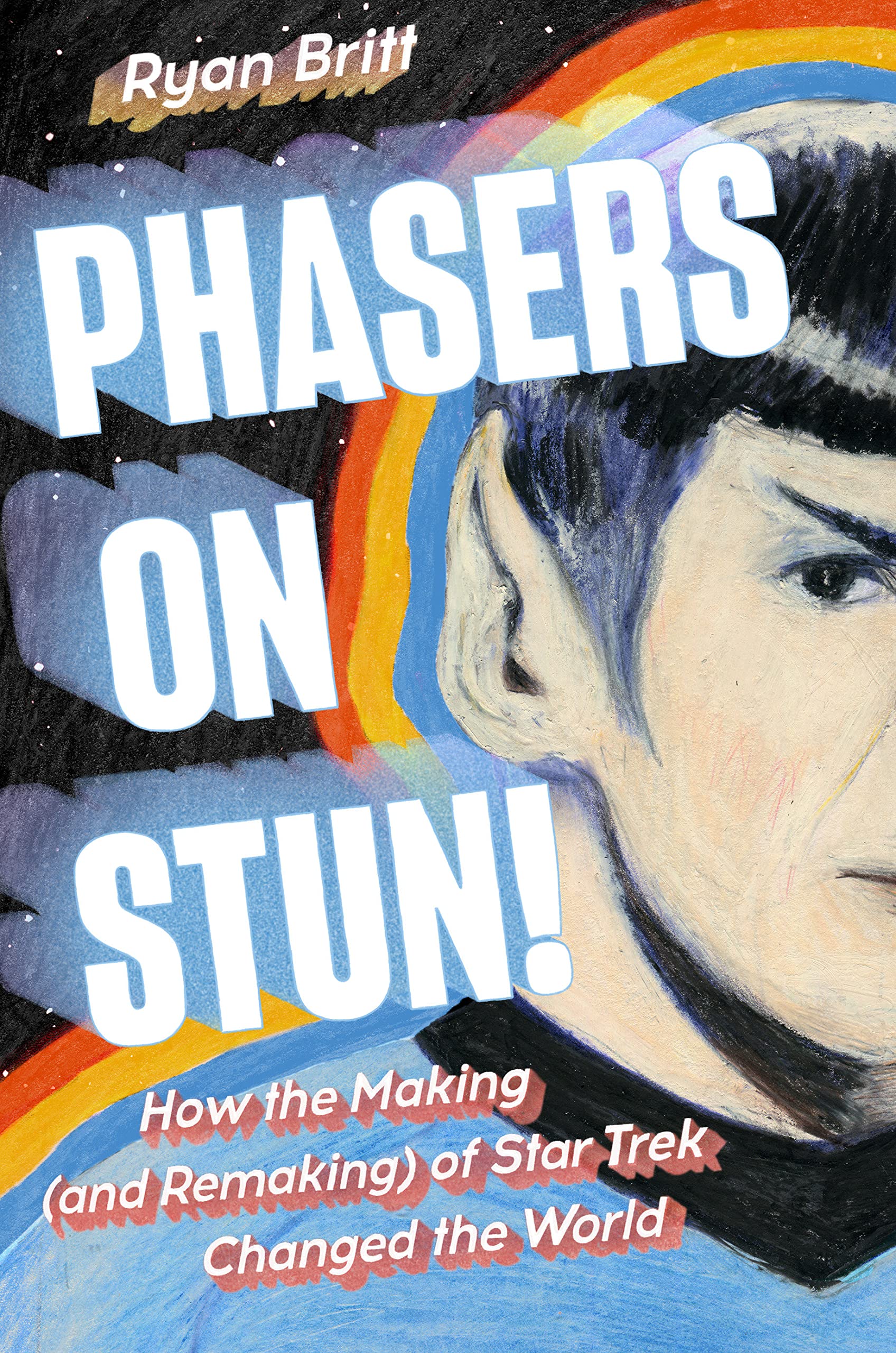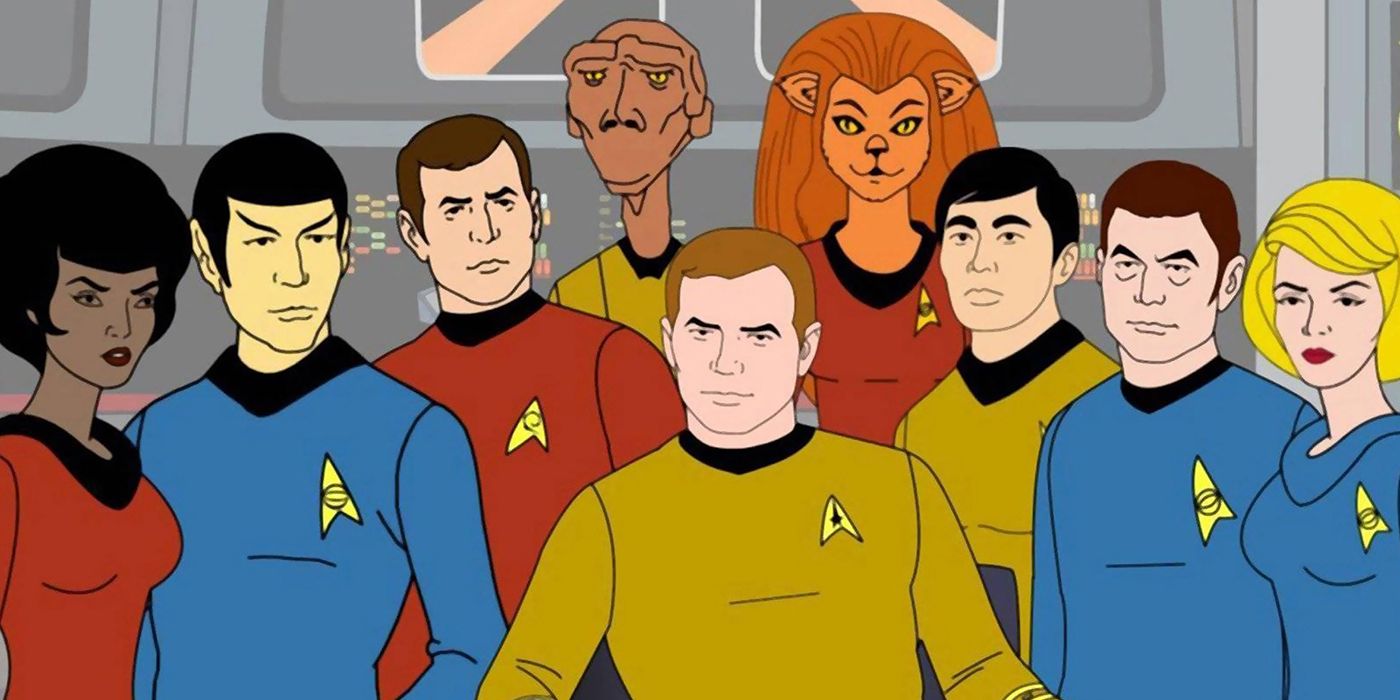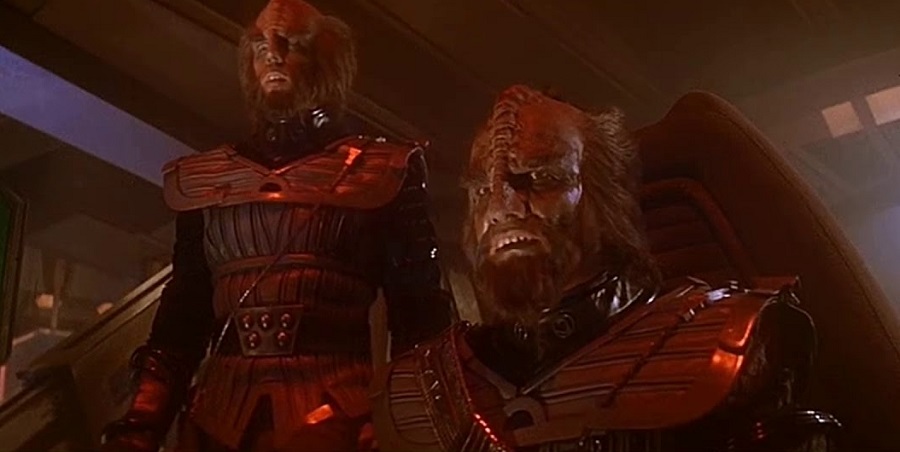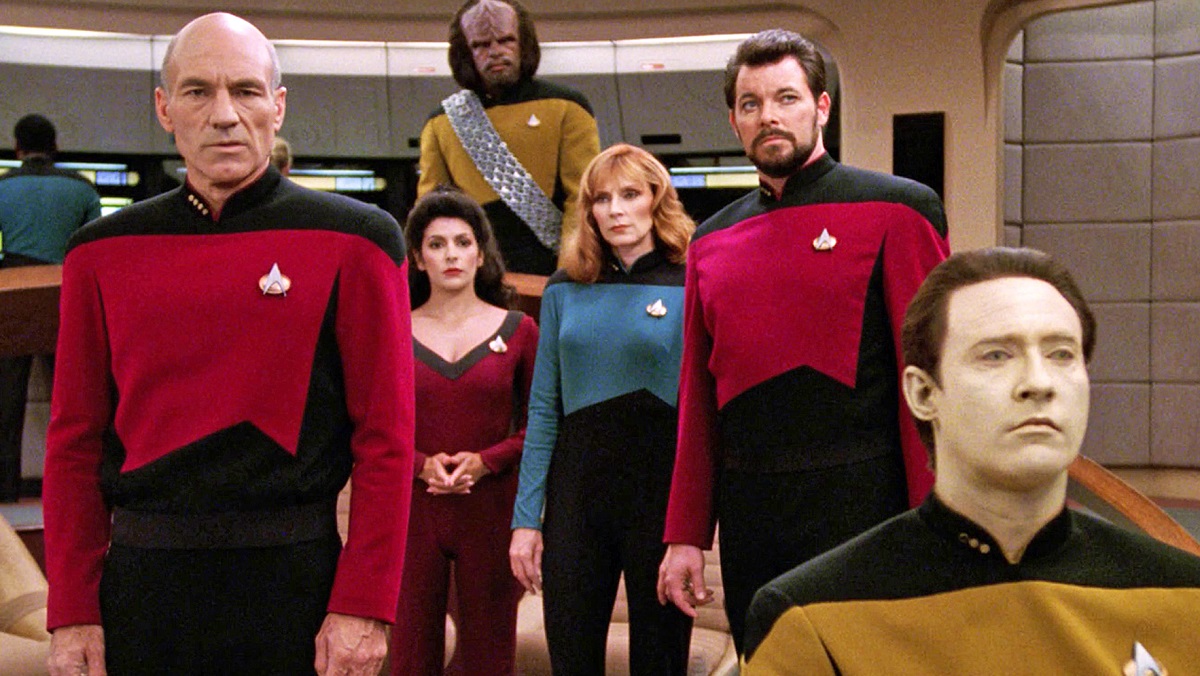Steeped in the legends and lore of the vast “Star Trek” franchise, veteran journalist Ryan Britt has been in love with the space opera sensation ever since he dressed as a diminutive Spock for Halloween as a third grader.
Britt’s new retrospective guide, “Phasers on Stun!: How the Making (and Remaking) of Star Trek Changed the World,” (Plume, 2022) arrives May 31 and cuts through the heart of the entire “Star Trek” universe. “. to address the myriad manifestations of creator Gene Roddenberry’s original “Wagon Train to the Stars” and examine the integration of the genre.
The guide is written in a light-hearted and absorbing style, and Britt’s love for the iconic sci-fi property shines through on every page, revealing insightful truths and little-known facts surrounding the making of all the “Star Wars” feature films and television series. Trek”. and animated shows, from the original “Star Trek” series to the upcoming “Star Trek: Discovery” spinoff “Star Trek: Strange New Worlds.” You can check out our Star Trek streaming guide to see where to watch them all to get ready for Britt’s book.
Related: ‘Star Trek’ movies, ranked worst to best

“Phasers in Stun!” traces the evolution of “Star Trek” from its formative years on the small screen in the late 1960s to its role as a revealing mirror reflecting the social and political problems of the 21st century Earth. Intensely researched with pop culture nuggets shining on every page, Britt’s entertaining tome has something for fans at every stage of the “Star Trek” obsession.
The 400-page book showcases more than 100 exclusive interviews with actors and writers from across the “Star Trek” spectrum, including Walter Koenig, LeVar Burton, Dorothy Fontana, Brent Spiner, Ronald D. Moore, Jeri Ryan, and a constellation of creators. key whose dedication has illuminated the franchise for more than five decades. “Phasers in Stun!” he also visits Michael Chabon (co-creator of “Star Trek: Picard”) and director Nicholas Meyer (“Star Trek II: The Wrath of Khan”).

Space.com spoke to Britt about this engaging “Star Trek” Valentine, to find out how this overview book came to be and why it’s a refreshing addition to the dozens of previously published “Star Trek” books that should enlighten Trekkies. of all trends.
Space.com: What was the genesis of this project, and why did the world need another “Star Trek” retrospective?
Ryan Britt: I’m friends with a lot of the guys who have done a lot of the “Star Trek” books over the years. Larry Nemecek, Mark Altman, and Ed Gross are good friends that I would consider my mentors. There have been many non-fiction books on the history of “Star Trek”, but I don’t think something like “The Fifty Year Mission” [Thomas Dunne Books, 2016]which became the essential bible for the unauthorized “Trek” story, is super accessible for someone to read on a plane.
“Dreaming of the Beatles” [Dey Street Books, 2017] is a fairly new book by Rob Sheffield that was my inspiration for doing “Phasers on Stun!” It’s an accessible look at The Beatles that tackled a lot of things you’ve always heard but weren’t sure what it was about, and had a very specific chatty tone.
I wanted to do that kind of thing but for “Star Trek” because it was something I knew a lot about and had done a lot of reporting on since the new shows came out. I wanted to use quotes that I used in previous articles and the ones that I didn’t and put them all in a new context to create something that reads like personal essays, something that would also be for people who don’t know anything about the making of “Star Trek,” who they’re not online and they’re not reading tweets or following the documentaries, to convey that information in a new way that was definitely not the oral history format. First of all, I wanted this book to be for the less visible Trekkies, the secret Trekkies.

Space.com: “Star Trek: The Motion Picture” appears in an episode of “Phasers on Stun!” Do you think the film has aged well over the years, or is it still “Star Trek: The Slow-Moving picture?”
Britt: I think it has gone up in value. Every other year, there seems to be an opinion that it was actually the most faithful to the original series, and I think there’s some truth to that argument. There are more behind-the-scenes books devoted to the making of “Star Trek: The Motion Picture,” which is funny because it was the most criticized movie in the franchise, aside from perhaps “Star Trek V.” From a financial and sociological perspective, there’s no ignoring the fact that if “Star Trek: The Motion Picture” had been the only “Star Trek” movie, the franchise probably would have died, or at the very least, it wouldn’t have come to fruition. look like what we think of “Star Trek” now.
And that’s the most important point of the book: that “Star Trek” is constantly changing radically, perhaps more so than any other media entity or sci-fi narrative franchise. Its radical changes are what define it. “Star Trek” changes the main characters and aesthetics in this gonzo way. For me, the difference between “The Motion Picture” and “The Wrath of Khan” is one of those great examples. Many people who aren’t hardcore sci-fi fans or “Star Trek” fans, for them, the “Star Trek” franchise begins with “The Wrath of Khan.” Fundamentally, every “Star Trek” movie since “Wrath of Khan” has almost always had some element of the film embedded in it, and I don’t mean from a sci-fi perspective but from a structural perspective.
We wouldn’t have the rest of “Star Trek” without “The Motion Picture,” and [director] Robert Wise did an amazing job. But I don’t think his influence shows that “Star Trek” was willing to change. As risky as the movie sounds, “The Wrath of Khan” was actually much riskier. It didn’t just appeal to people who went to church from “Star Trek” every Sunday; it attracted people who hadn’t been to the “Star Trek” church in a long time. And that was important.

Space.com: Of all the “Star Trek” series or movies, which one do you identify with the most?
Britt: I would say “Star Trek: The Next Generation” and its spin-offs, “Deep Space Nine” and “Voyager,” all three shows. To a lesser degree, “Star Trek: Enterprise.” The fact that “The Next Generation” worked is shocking. That series was mine for sure. I wrote reviews of it in my diary when I was a kid and thought about it a lot. I recently told Patrick Stewart when I interviewed him for “Picard” season 2 that I got the audio from his one-man show of Charles Dickens’ “A Christmas Carol” and listened to it when he was 10 years old. I became interested in Dickens because of him, and that was very formative.
“The Next Generation” was a mood and a feeling that the original series didn’t have: the camaraderie and togetherness of those main characters, although the other actors have had it to varying degrees. But “The Next Generation” had it first, and that was really revolutionary.
“Phasers on Stun!: How the Making (and Remaking) of Star Trek Changed the World” hits bookstores and major online retailers May 31.
Follow us on twitter @Spacepointcom or in Facebook.
